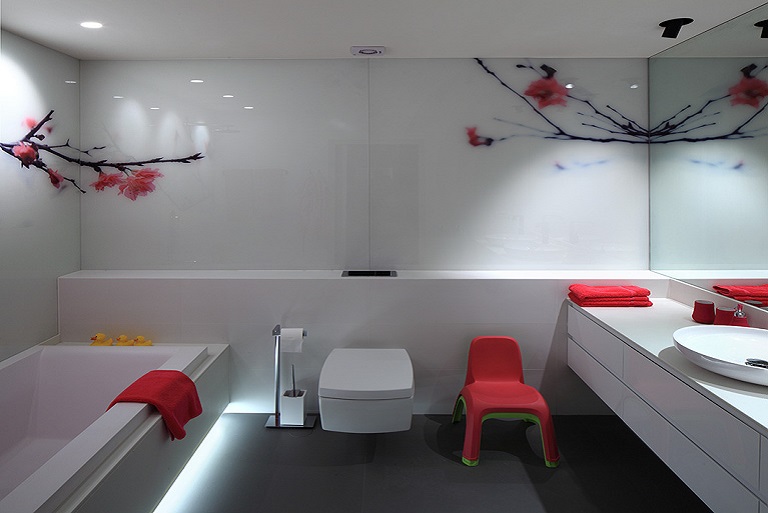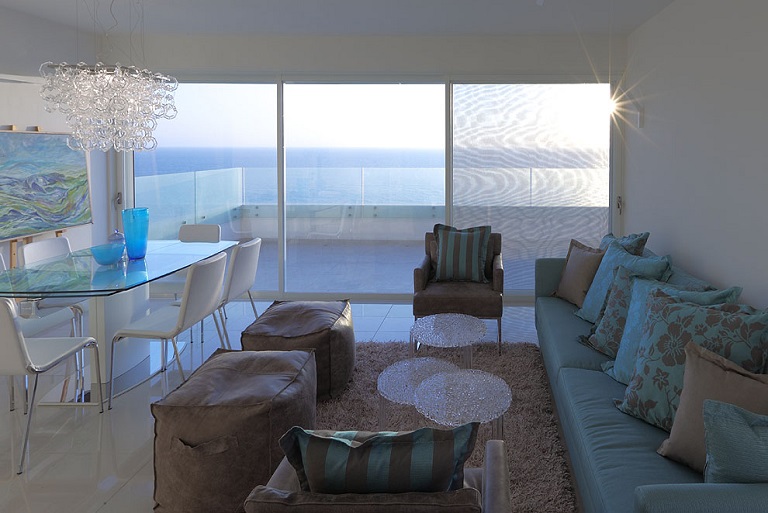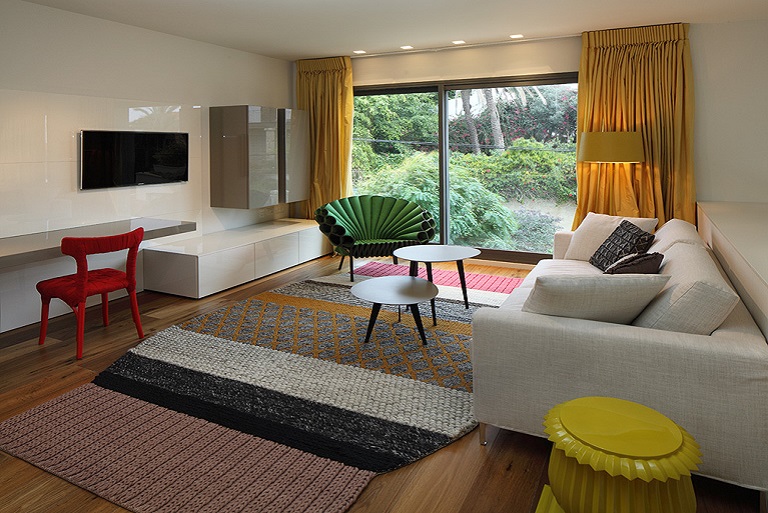
Five Tips for Properly Planning the Accessories in the Home
Oftentimes the thought of accessorising the house is postponed to the end of the planning stage or renovation.
However, in order to achieve a satisfying result, the kind that you will be proud of, it is best to already start thinking
of the final shape of the house at the beginning, says architect and interior designer Ralu Shatz.
apartments and private homes. For the past couple of years she has focused mainly on interior design, a decision based
on her love of people and the challenge of “transforming an ordinary, simple space into a breath-taking designed space”.
Below are her five tips for properly planning the accessories in the home:
Transforming an ordinary space into a breath-taking designed space. Photography: Uzi Porat
1. I usually wander around the house right at the beginning, looking at the view, the light, trying to imagine the atmosphere
of the house and the shades that will best and most accurately integrate into the home. Similarly, the better I know the client,
his or her taste and dreams, the more I plan the unique elements that I would like to incorporate into the house and design
their designated space in advance. I plan the space so that it can contain the furnishings that I have in mind, and don’t just
squeeze in anything that fits.
I look at the view, the light, trying to imagine the atmosphere of the home. Photography: Uzi Porat
2. In order to achieve a complete look that combines the home’s architectural plan and styling, I first try to decide on a
uniform colour scheme for the entire house. If the house is colourful and cheerful, then it should be so throughout; if the
house is white monochrome, then this should be reflected in all areas.
Sometimes the view provides the best anchoring point- the shade of the sea, a particular tree that is visible from the window,
or the red rooftops seen in the distance.
I formulate a uniform design language and follow it through, considering it in all planning stages.
A uniform design language throughout the home. Photography: Uzi Porat
3. As the house begins to take shape, I start going to the stores with the clients and ideas begin to form. It is important not
to be locked on a single idea, but to flow with one another.
Sometimes I see the general concept of the space and the customer suddenly spots a light fixture that he really likes, and
insists on it; but I know that it doesn’t accord with his house. People don’t always have the broader view that architects do;
therefore it is best to listen to the architect and trust him or her regarding what is appropriate and what is not.
It's important not to think of each item as stand-alone. 
Choose neutral colours for anything related to heavy furnishings. Photography: Uzi Porat
4. For those who would like to refresh the look of their homes in the future, I propose that they choose a priori neutral colours
for the heavy furnishings such as the couches, tables, and kitchen surfaces and cupboards. Therefore, the choice of these
elements is already important at the planning stage.
I wouldn’t buy a sofa with red flowers just because I like it right now, because in the future I may tire of it. If the base is good
it can last for years and the surrounding decor can change: you can change the couch pillows, the carpet or the artwork
on the wall.
5. Just like the homes I plan, most of the kitchens I design are contemporary. In these kitchens everything is inside: there are
no objects on the counters and everything is stored.
This factor transforms the surface and the cupboards into the main part of the kitchen, and therefore the selection of the work
surface is already important at the planning stage. On the other hand, it doesn’t mean that everything has to be clean and sterile.
You can also incorporate art in a kitchen, hang a few pictures and play around with clocks. In addition, a light fixture over an
island can be a designer element that draws attention, and even bar stools can provide the desired addition of colour.